
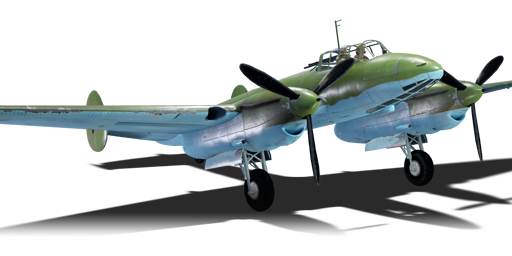


The Pe-2-83 is a Soviet dive bomber. It has been in the game since the start of the Open Beta Test prior to Update 1.27.
The Pe-2 fulfils much the same attack craft role as the IL-2. While the armament is a mix of MGs and therefore worse than the IL-2's, it can carry much heavier bombs, allowing it to destroy targets in one hit that a Sturmovik might take two or three bombs to destroy. Additionally, its nose-mounted weaponry, ability to mount rockets, and fact that it spawns at bomber altitude in Arcade make it a surprisingly effective bomber hunter in a pinch. However, as in other attack craft, you should have a friendly cover you whenever possible. While it has a decent amount of defensive guns and is faster than the Sturmovik, it is still very vulnerable when caught alone. Further, it is very vulnerable to diving attacks due to its dorsal-mounted fuel tank.
However, there are disadvantages as well. The fixed armament is inadequate at best. Two nose-mounted machine guns simply lack the punch of cannons and their low ammunition supply prevents prolonged usage. The defensive armament is not any better – the upper and lower hemisphere of the aircraft are each defended only by a single 7.62 mm machine gun, with the ventral turret having an extremely limited field of view and the side mounts being largely redundant. Your best defence is then the Pe-2's agility and speed. When attacked by enemy fighters, use your speed to run away and your agility to dodge gun passes until you have reached friendly fighters or strong allied AAA.
Fast, agile and very versatile, the Peshka can be a great bomber if used correctly and its niche lays in tank battles, as a precise dive bomber. Further research of this line will then lead you to even faster and better-armed variants. Notably 128 mm rockets, excellent for tank attacks and the occasional bomber.
flaps
flaps
flaps
brake
| Belt | Belt filling | Armor penetration (mm) at a distance: | |||||
|---|---|---|---|---|---|---|---|
| 10 m | 100 m | 500 m | 1000 m | 1500 m | 2000 m | ||
| T/AP/AP/IAI | 32 | 30 | 22 | 15 | 11 | 7 | |
| AP-I/API-T/IAI/IAI | 29 | 27 | 20 | 13 | 9 | 6 | |
| API-T/AP-I/AP-I/IAI | 29 | 27 | 20 | 13 | 9 | 6 | |
| AP-I(c)/AP-I/AP-I/API-T/IAI | 34 | 32 | 24 | 17 | 12 | 8 | |
| API-T | 29 | 27 | 20 | 13 | 9 | 6 | |
| AP-I/AP-I/IAI | 29 | 27 | 20 | 14 | 9 | 6 | |
| Belt | Belt filling | Armor penetration (mm) at a distance: | |||||
|---|---|---|---|---|---|---|---|
| 10 m | 100 m | 500 m | 1000 m | 1500 m | 2000 m | ||
| T/Ball/Ball/AP-I/AI | 13 | 12 | 7 | 3 | 2 | 0 | |
| AP-I/AI/API-T | 13 | 12 | 7 | 3 | 2 | 0 | |
| AP-I/API-T | 13 | 12 | 7 | 3 | 2 | 0 | |
| AP-I/AP-I/AP-I/AI | 13 | 12 | 7 | 3 | 2 | 0 | |
| Belt | Belt filling | Armor penetration (mm) at a distance: | |||||
|---|---|---|---|---|---|---|---|
| 10 m | 100 m | 500 m | 1000 m | 1500 m | 2000 m | ||
| T/AP/AP/IAI | 32 | 30 | 22 | 15 | 11 | 7 | |
| API-T/AP/AP/AP-I(c) | 34 | 32 | 24 | 17 | 12 | 8 | |
| API-T/AP-I | 29 | 27 | 20 | 13 | 9 | 6 | |
| Belt | Belt filling | Armor penetration (mm) at a distance: | |||||
|---|---|---|---|---|---|---|---|
| 10 m | 100 m | 500 m | 1000 m | 1500 m | 2000 m | ||
| T/Ball/Ball/AP-I/AI | 13 | 12 | 7 | 3 | 2 | 0 | |
| AP-I/AP-I/AP-I/API-T | 13 | 12 | 7 | 3 | 2 | 0 | |
| API-T/API-T/API-T/AI | 9 | 8 | 6 | 3 | 0 | 0 | |
| Name | Weight | Slot | ||||||||
|---|---|---|---|---|---|---|---|---|---|---|
| 5 × | 211.8 kg | 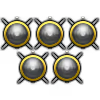 |  | |||||||
| 5 × | 258 kg | 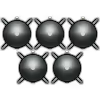 |  | |||||||
| 103.5 kg |  |  |  |  |  |  | ||||
| 252.2 kg |  |  |  |  | ||||||
| 240 kg | 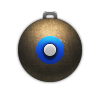 |  |  |  | ||||||
| 508.3 kg | 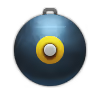 |  | ||||||||
| 531.3 kg | 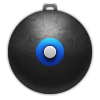 |  | ||||||||
| 4 × | 414 kg | 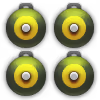 | ||||||||












Flight performance | |
|---|---|
Weaponry | ||
|---|---|---|